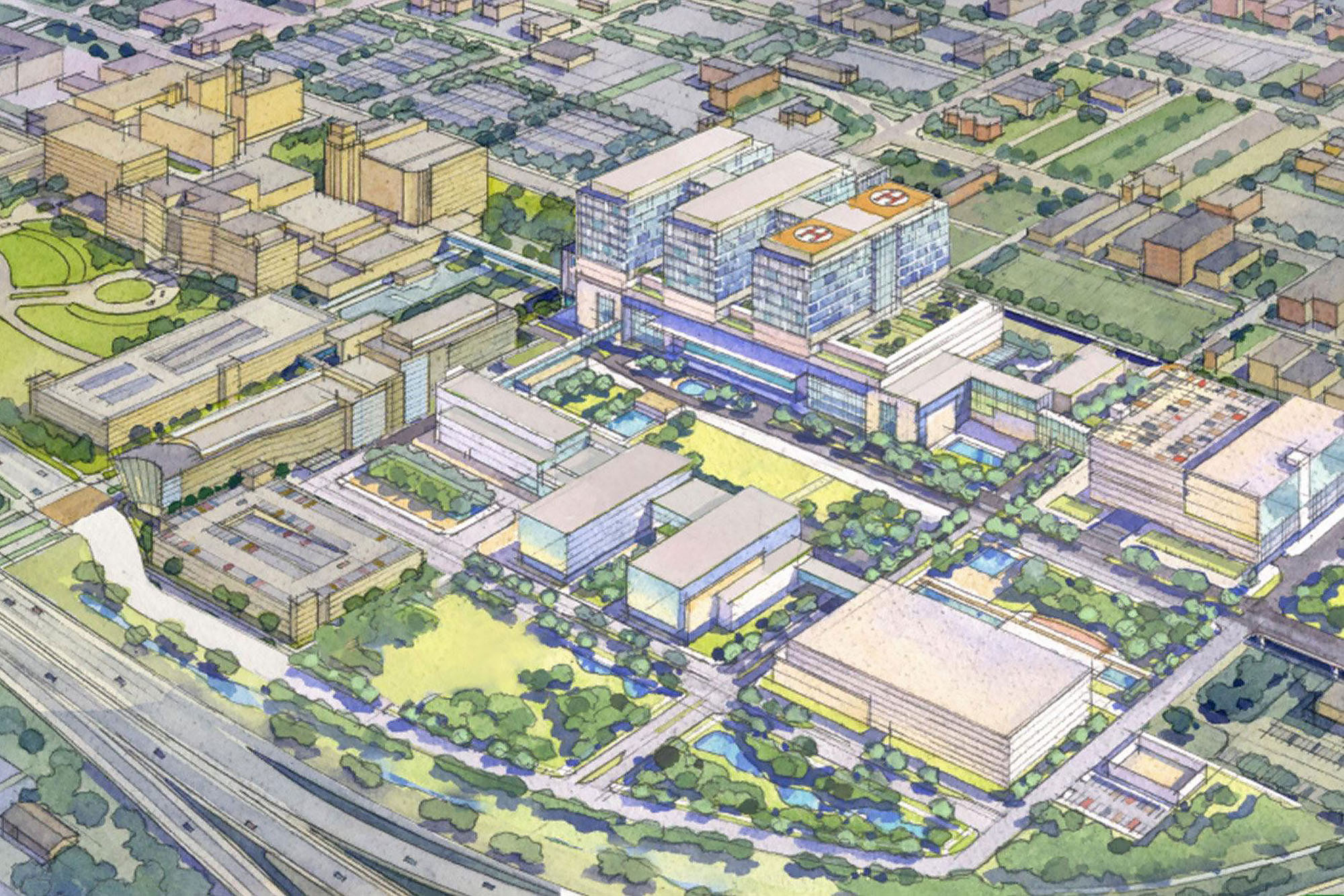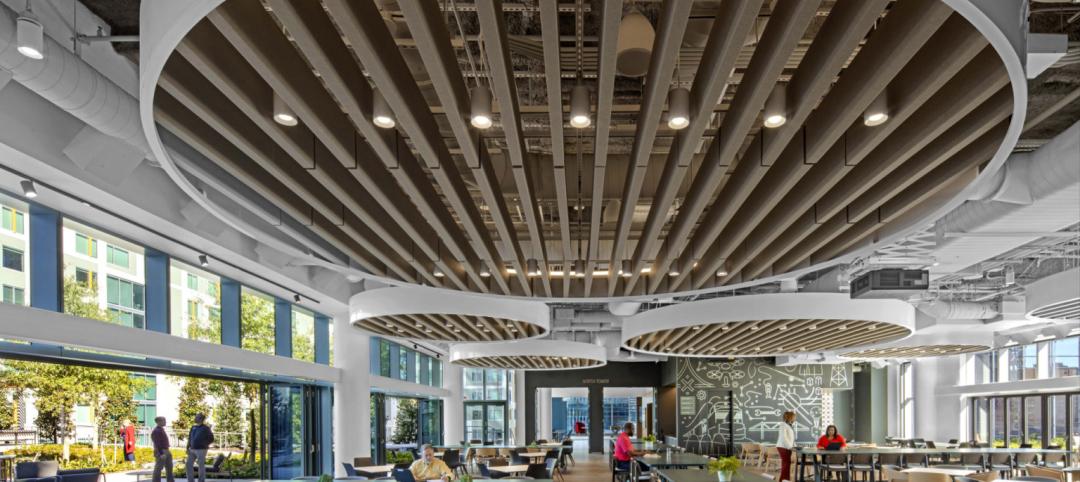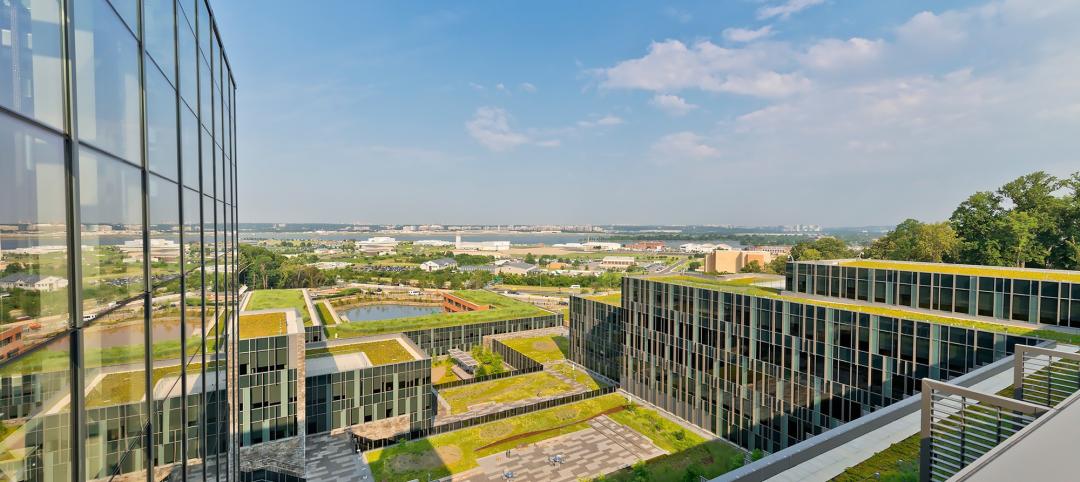Academic medical centers (AMCs) are training grounds for physicians and destinations for leading-edge treatment and research. These large, integrated facilities are also incredibly complex—operating almost like cities within cities—and require careful planning and design to be successful.
To better understand the challenges of designing these unique project types, HOK hosted a LinkedIn Live with Jim Mladucky, vice president of IU Health design and construction, who is overseeing the development of a new $4.29 billion academic medical center campus in downtown Indianapolis. Also on the panel were Paul Strohm and Scott Rawlings, directors of HOK’s Healthcare practice, who bring decades of experience designing and planning complex AMCs. Moderating the panel was Hunvey Chen, regional leader for HOK’s Healthcare practice in Los Angeles.
Watch the full panel discussion below or continue on to view seven key ideas and trends that emerged from the conversation.
1. Three Questions to Begin
AMCs take years to plan, design and build. For projects this intricate, just knowing where to begin can be overwhelming. To help kick off the process, Strohm recommends healthcare administrators answer three questions:
- Why? Why is the project necessary? The answer to this question must address how the project fits into the strategic mission of the organization.
- What? What need will be addressed? What is the program? What is the budget? And who is the leader within the organization that will work with the designers and builders to steer the project?
- How? How will the project be delivered? This answer must consider the project’s life-cycle from master planning, programming, design, construction and activation and a decision-making structure for answering the tens of thousands of questions that will arise during the project.
2. The Need for Flexibility
Flexibility was key to the planning and design of IU Health’s new AMC, which is now under construction in Indianapolis. Mladucky shared how IU Health decided to increase the number of patient beds by nearly 200 after seeing demand surge during COVID-19. The additional beds will allow the new hospital to respond to future crises and serve a population that is older and sicker than prior generations.
“One of our guiding principles is adaptability. We expect to adapt and the cost to reprogram the space to be among the lowest in the country,” said Mladucky. “That’s a huge challenge … You start with a structural grid, and you work from there and allow for that physical environment to adapt over time from what might today be inpatient care to outpatient care to clinical research to wet bench research to officing. The first cost of that flexibility is higher, but the long-term cost is lower because you’ve invested upfront.”
3. Design for Patients, But Don’t Forget Caregivers
Increased patient volumes are placing added demands on caregivers. In addition to designing AMCs to support patient health, today’s hospitals must also nurture the well-being of overworked caregivers, said Rawlings.
“We’re in a critical place in this country. We don’t have enough well-trained clinical staff, and we’re losing good quality people because of the pressure and stress. From a design perspective, we need to start embracing the idea of creating workplaces that are the best in their city and support recruitment and retainment.”
4. Planning for Technology and Data Capture
Any hospital planned today must be designed with the necessary infrastructure to support new and emerging technology.
“It used to be that hospitals had imaging and that was about it,” said Strohm. “Now technology is reaching into all facets of care. We spend a lot of time studying and budgeting for future technology and infrastructure needs. And some of that technology hasn’t yet been invented.”
Data capture is also key as smart technology enables hospitals to respond to challenges in real-time.
“How do you plan for the future? You collect data, and you respond to data,” said Rawlings, who gave the example of a hospital that captures data to identify space bottlenecks and automatically reassign patients and staff. “I think you’re going to see more buildings collect data behind the scenes and use it to improve operations.”
5. Vertical Integration
More and more AMCs are including single buildings that have the three elements of education, research and treatment. These translational centers provide more significant opportunities for collaboration and breakthroughs.
“If we can learn, treat, research and trial together, we’re going to advance that specialty faster,” said Rawlings. “There’s real value in bumping into people each day, having lunch together, sharing ideas.”
6. Advancing Sustainability
Hospitals require vast amounts of energy to heat, cool and operate. As energy costs rise and climate change accelerates, hospitals must seek cleaner, more efficient ways to power their buildings. IU Health’s new AMC, for example, is designed to transition to electricity with on-site solar energy production and geothermal power.
“There’s a great need to reduce the carbon footprint [of these buildings] and to get to a point down the road where they can be energy positive, as opposed to energy negative,” said Strohm.
7. Championing Community Health
As the leading medical institutions in most cities, AMCs have a responsibility to improve community health. AMCs should think of how they can reach people outside the walls of the hospitals. This might mean partnering with developers to create affordable housing, working with planners to eliminate food deserts and creating satellite facilities to reach those who are most in need.
“We’ve said from the beginning that if our new facility is just a replacement hospital, we’ve failed,” said Mladucky. “We must change the health of the community. Today, the people who live around our [new site] have an average life expectancy of 68 years. That’s just not acceptable. We must do better than that. That’s one of the main things we’re focused on with this project—changing Indiana from one of the least healthy states in the country to one of the healthiest.”
More from Author
HOK | Aug 8, 2024
6 design trends for the legal workplace
Law firms differ from many professional organizations in their need for private offices to meet confidentiality with clients and write and review legal documents in quiet, focused environments
HOK | Jun 6, 2024
HOK presents neurodiversity research and design guidelines at SXSW 2024
Workplace experts share insights on designing inclusive spaces that cater to diverse sensory processing needs.
HOK | Apr 2, 2024
How university rec centers are evolving to support wellbeing
In a LinkedIn Live, Recreation & Wellbeing’s Sadat Khan and Abby Diehl joined HOK architect Emily Ostertag to discuss the growing trend to design and program rec centers to support mental wellbeing and holistic health.
HOK | Jan 25, 2024
40 Under 40 Class of 2023 winner Kimberly Dowdell inaugurated as AIA 2024 President
The American Institute of Architects (AIA) has announced the inauguration of Kimberly Dowdell, AIA, NOMAC, NCARB, LEED AP BD+C, Principal and Director of Strategic Relationships at HOK and BD+C 40 Under 40 superstar, as its 100th president.
HOK | Jul 13, 2023
Deep green retrofits: Updating old buildings to new sustainability standards
HOK’s David Weatherhead and Atenor’s Eoin Conroy discuss the challenges and opportunities of refurbishing old buildings to meet modern-day sustainability standards.
HOK | Jun 5, 2023
Office design in the era of Gen Z, AI, and the metaverse
HOK workplace and interior design experts Kay Sargent and Tom Polucci share how the hybrid office is evolving in the era of artificial intelligence, Gen Z, and the metaverse.
HOK | May 5, 2023
9 workplace design trends for 2023
HOK Director of WorkPlace Kay Sargent and Director of Interiors Tom Polucci discuss the trends shaping office design in 2023.
HOK | Apr 4, 2023
6 examples of modern college training facilities
HOK discusses the future of college training facilities, with six design takeaways derived from a discussion between Dan Radakovich, Director of Athletics at the University of Miami, and Trevor Bechtold, Director, HOK’s Sports + Recreation + Entertainment practice.
HOK | Feb 23, 2023
Using data to design the sports venue of the future
Former video game developer Abe Stein and HOK's Bill Johnson discuss how to use data to design stadiums and arenas that keep fans engaged and eager to return.
HOK | Jan 23, 2023
How regenerative design is driving AEC industry innovation
HOK's Sean Quinn and Microsoft's JoAnn Garbin discuss the next step of sustainability: regenerative design.
















